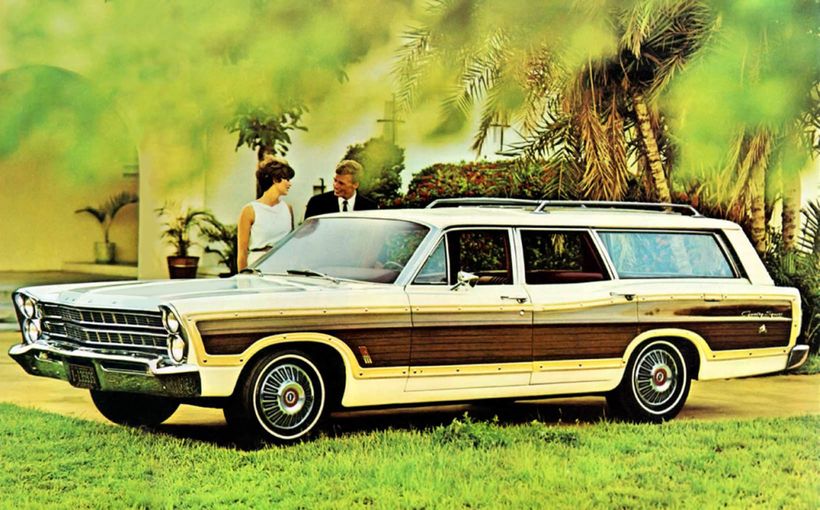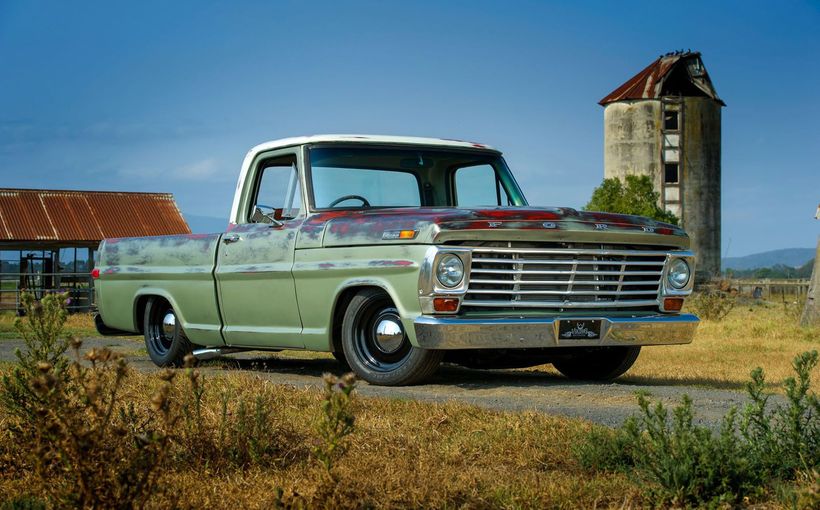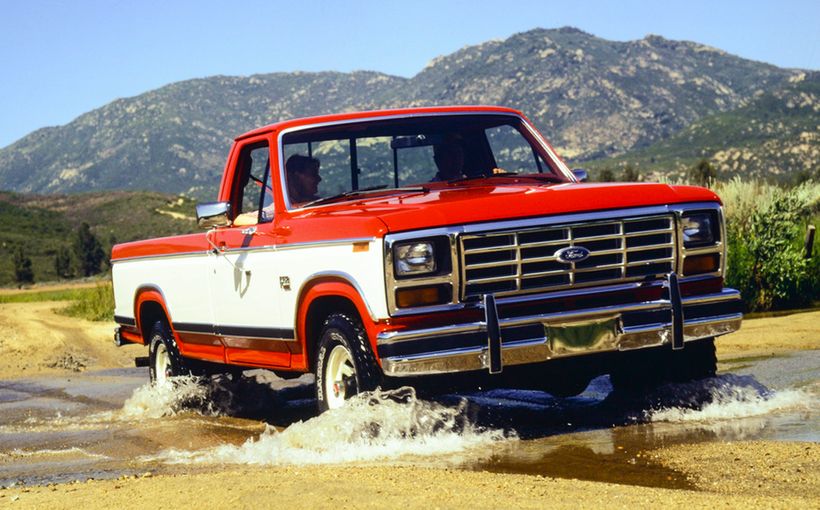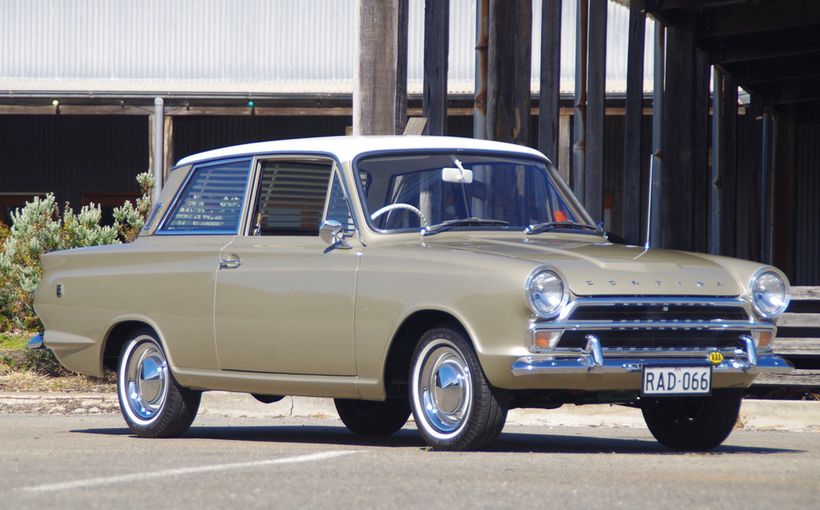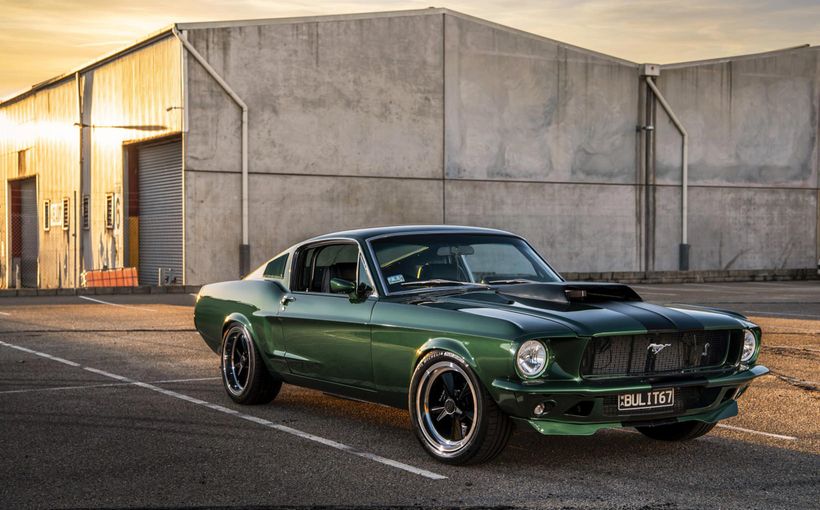Ford Anglia 105E: Ford of England’s angle on a rakish small car

Nineteen fifty-nine was a most significant year for the international automotive industry. It's fair to say that, for the first time, manufacturers displayed new cars that reflected the 1955-56 Suez Crisis with its implications for the supply and price of petrol. Alec Issigonis's Morris Mini-Minor and Austin Seven twins were the most obvious of these. There were at least two other important new small British cars making their debut at that year's Earls Court Motor Show in London – the Triumph Herald and the Ford Anglia 105E.
It was also the year that Detroit revealed its new Compacts, one of which, the Valiant (which in its earliest days was a brand in its own right), made its debut at Earls Court. These Compacts constituted a direct response to the strong sales of the Volkswagen – dubbed 'that little sh#tbox' by no less a luminary than Henry Ford II. (The Renault Dauphine was another small import that achieved some popularity in the US but the undoubted star was the Beetle.)
The new Anglia may have been the most conservative of these three new small British cars, but for Ford of England (as it was then known) it was a major forward step. It was the first modern small Ford, about as different from the outgoing ‘sit-up-and-beg’ entry level Popular as could be imagined. Somewhat remarkably, General Motors (GM) – unquestionably the world's first true multinational automotive manufacturer –offered no car smaller than the Vauxhall Victor, although Opel had produced the monocoque Cadet in the late 1930s.

Ford began building its Model Y small car in its new Dagenham plant in 1933. The Model Y was the first Ford designed outside of the US and its lineage to the Ford Anglia 105E and, indeed the Escort (which was originally to have been an Anglia until Ford executives decided the name was 'too English' for European customers) was unbroken. So Ford of Britain produced six generations of small cars (four of them Anglias) before the introduction of the Escort.
The utilitarian Model Y was assembled in Australia and also built in France (1932-34 as the 6V), Germany (1933-36 as the Köln) and South Africa. There were 2- and 4-door sedans, a 2-door estate, 2-door van and a 2-door pickup.

After the Model Y came the Model 7Y (1938-39). Then, shortly before the outbreak of World War Two, this car was superseded by the first Anglia, the EO4A, essentially just a facelift. It was a very basic machine, still using an 0.9-litre side-valve four-cylinder engine, mechanical brakes, three-speed gearbox and a single vacuum-operated windscreen wiper.

The E494A Anglia was introduced in 1948 as a stopgap until a new monocoque would be ready. So this first postwar model was in every respect a pre-war design. When the 100E finally arrived in 1953, production of the E494A Anglia continued in even more basic form as the Popular (as previously mentioned), lingering not just through the years of postwar austerity but right through until 1959 and the launch of the 105E.

Despite their scaled-down Consul/Zephyr styling and unitary construction, the 100E models remained mechanically old-fashioned with side-valve engines, three-speed gearboxes (albeit with floorshift) and the dreaded vacuum wipers – of which, thankfully, there were two.
So it was not until the launch of the Anglia 105E that Ford had a truly competitive small car. Compared with the (1953) Fiat 1100 and even the 1956 Morris Minor 1000, the 100E two-door Anglia and four-door Prefect were outmoded, despite their flash styling.
Only once did I drive a 100E Prefect and it was quite an experience. The top speed was maybe a true 70 miles per hour down quite a long hill but let me tell you the brakes at the bottom were scarifying. There was an unconscionable gap between second and third gears and first was, of course, unsynchronised. The Fiat 1100 103D I had owned shortly beforehand also had an unsynchronised low gear but it did have four ratios.
Despite being maybe just four years newer than this ‘Defect’ (property of a too-trusting girlfriend's mother), felt about 10 years older in design. I think it could more properly have been compared with the Standard Eight and Ten. The Volkswagen (even in the guise of my 1960 36-horsepower variant) and the Morris Minor 1000 both felt more advanced in design. So, in summary, I think the 100E models were lacklustre vehicles.

This is the context in which the 1959 Ford Anglia should be understood; in design terms it was almost as much as a step forward from the 100E as the Mini was from the Minor 1000. It went from body-on-frame to monocoque construction, side-valve engine to overhead-valve, three gears to four, vacuum wipers to electric.
The 105E might have been the star of the 1959 Earls Court show had it not been for the Issigonis Mini. The styling was radical with a strong Detroit influence, evident especially in its (1957) Mercury-like reverse rake rear window which did liberate more headroom. And publicity photographs showed how it remained clear in snow, more relevant in London. (So why didn’t the Italian-snow-resort Cortina get this treatment, too? It seems that good taste prevailed over this highly specific and rarely required advantage!)
Not only did the new Anglia’s engine boast overhead valves but this 997cc unit was ultra-modern in being markedly over-square with its 81mm bore and 48.5mm stroke. And didn't it love to rev! Its maximum power of 39 brake horsepower did not arrive until 5000 rpm, which was sky-high by the standards of the day. It was a great engine, which readily lent itself to the efforts of tuners.

Known as the Kent, the engine took its name from the county. Ford of England's executive engineer (power units), Alan Worters, lived across the river from the Dagenham plant in Kent. Thus are legends begun!
The 105E was an immediate success. It may have seemed almost conservative compared with the bold new Triumph Herald but was far more robust. In performance terms the new Anglia competed directly with the Minor 1000/Austin A35 (and its Farina A40 successor), the (1962) 40 bhp Beetle, Renault Dauphine and Fiat 1100 103D. Few customers seemed to miss the lack of a four-door variant, sold as the Prefect in the two previous postwar series.

The 105E was the first Ford in the world to be equipped with a four-speed gearbox. In the U.K. There were different trim levels but only the Deluxe was sold in Australia. There were also panel vans and estate car but these were never offered here. In the 1962 Wheels Road Tests, Number four, each car in the ‘Table of Comparative Models’ earns an adjectival description. The Anglia is classed as ‘well developed’, so presumably there were few reports of the cars failing to stand up to Australian conditions like some previous imported models.

Arguably, the Anglia 105E was the most successful of all small cars that incorporated Detroit styling themes. It is difficult to believe how awkward the Ford Consul Classic and first Ford Capri look by comparison.
Ford of England (to be renamed Ford of Europe in 1960) had been slow to equip its smallest models with modern engines and transmissions, but developments sped up in the second half of the 1950s. By the time the 105E first appeared in the traffic, the Cortina was being readied for market. Its name for an Italian ski resort pointed to the new model’s role as Ford’s first truly international smaller offering. The Cortina would be positioned between the Anglia and the Zephyr/Zodiac and was powered by a stroked (but still over-square) 105E engine displacing 1198cc.

The Cortina made its debut on 20 September 1962 and the larger engine was then offered in the Anglia Super, known as the 123E and which promised a top speed of almost 90 miles per hour, up 17 on the standard 105E’s. With 48.5 brake horsepower, an all-synchro gearbox, a heater, two-tone paintwork and a decorative side stripe, this Anglia was quite the hotshot. It was not sold in Australia.
Heading into the 1960s the leadership of the small (Anglia/Mini) and medium (by 1963, Cortina/Morris 1100) sectors was being fought out between BMC and Ford. In the end the latter prevailed as the public increasingly favoured Ford’s relative orthodoxy over Issigonis-inspired radicalism; orthodox also proved less troublesome!
By the time GM fielded its Vauxhall Viva in September 1963, there was little hope of mounting a serious sales challenge to BMC and Ford. The paradox here is that, under Russell S. Begg who would become the chief engineer of the Holden 48-215 in 1944, Opel had pioneered the mass-produced monocoque well in time for World War Two. Its 1936 Cadet light car set a new template for the class, weighing just 757kg. Vauxhall introduced a similar 10 in 1937. It was sold briefly after the war but in the face of increasing competition among small family cars was withdrawn in 1947. There was then a 16-year hiatus until the introduction of the Vauxhall Viva.

Meanwhile, Ford of Europe, just like Opel and Vauxhall, benefited from Detroit expertise. The Holden 48-215 was the world’s second monocoque six-cylinder sedan (after Begg’s 1937 Opel Kapitän). But Ford soon had a broadly similar vehicle, albeit one not designed to cope with Australia’s rugged roads and would-be roads. The Zephyr was thoroughly modern in 1950. Even three years later, the new-look Anglia and Prefect remained essentially pre-war in their mechanicals, despite contemporary styling and unitary construction. Ford’s first modern OHV four-cylinder engine was the 1.5-litre unit fitted to the Consul.
Why was the Zephyr (and its four-cylinder Consul sibling) so advanced? Simple. When Chevrolet decided to drop its planned Cadet compact car in 1947, chief designer Earl MacPherson (of the eponymous strut) was head-hunted by GM’s arch-rival Ford. He took his plans for the radical Cadet to Ford of Britain and the Consul/Zephyr included many elements of his thinking.
Taking a big picture view, it is likely that in the immediate aftermath of war, automotive industry executives did not see advanced technology as critical to new car sales. Demand enormously exceeded supply with the bulk of British cars being exported to the US, Canada, Australia and elsewhere. The (English) Ford Pilot with pre-war styling and side-valve V8 met demand that would later be satisfied by the Holden.
Compared with the gawky and upright E494A, the Austin A40 Devon must have seemed to be a near miracle car, the epitome of postwar modernity! Austerity lingered in Britain much longer than in Australia and there were no such straitened circumstances in the US. In this context, even though Alec Issigonis’s Morris Minor used a side-valve engine, it was radical compared with the carryover Anglia.
The 105E Anglia was in production from 1959 to 1967 without a major facelift. Its rear window looked strange at the time but the fashion would return in the twenty-first century. Had this small Ford made its debut in any other year but the one chosen by BMC for the Mini, it would have been even bigger news. In summary, it was an appealing and characterful machine that brought plenty of Detroit flair to the European market and was popular (as opposed to Popular!) wherever it was sold. It was said that Ford made money on ever one, while BMC lost £5 on every Mini it sold. When the last ever Anglia was discontinued, the sales tally was 1,004,737, more than the total number of Holdens built from late 1948 to October 1962.





